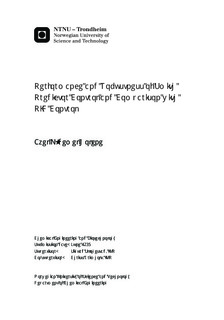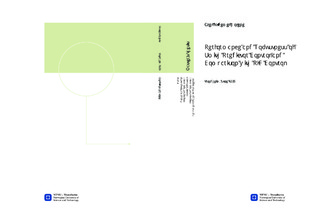| dc.contributor.advisor | Skogestad, Sigurd | nb_NO |
| dc.contributor.advisor | Grimholt, Chriss | nb_NO |
| dc.contributor.author | Holene, Axel Lødemel | nb_NO |
| dc.date.accessioned | 2014-12-19T13:24:24Z | |
| dc.date.available | 2014-12-19T13:24:24Z | |
| dc.date.created | 2013-10-17 | nb_NO |
| dc.date.issued | 2013 | nb_NO |
| dc.identifier | 657077 | nb_NO |
| dc.identifier | ntnudaim:9976 | nb_NO |
| dc.identifier.uri | http://hdl.handle.net/11250/248582 | |
| dc.description.abstract | The performance and robustness of the Smith predictor controller has been tested for first and second order processes with time-delay by comparing with PI and PID control. It was assumed that the performance would obviously be better when the time-delay is known. Pareto optimal PI and PID controller tuning curves has been found. The processes studied is divided between five first-order-plus-time-delay and nine second-order-plus-time-delay models. Performance have been defined as a weighted average of the integrated absolute error for a step load change in input and output disturbances. Robustness has been defined in terms of the maximum peak of the sensitivity function (Ms). The Pareto optimal Smith predictor tuning curves have been found. Deterioration in performance and robustness have been evaluated when the process time-delay deviate from the nominal time-delay for which the controllers are optimal. SIMC tuning curves have been compared to the Pareto optimal PI and PID tuning curves, and a method for applying SIMC tuning to Smith predictor controllers have been suggested. The Smith predictor have proven to yield small performance enhancements compared to optimal PI and PID control on second-order processes. For first-order processes the optimal PI and PID controllers have performance superior to the Smith predictor. When the process time-delay varies, even Smith predictor controllers with modest Ms values tend to destabilise. No reason are found for utilising a Smith predictor PI or PID controller over a Pareto optimal PI or PID controller. One will have to tune the Smith predictor to yield very low Ms values to avoid the instability issues when modelling error in the time-delay parameter occurs. The potential increase in performance achieved is easy to compensate with a regular PI or PID controller by tuning it a little tighter. | nb_NO |
| dc.language | eng | nb_NO |
| dc.publisher | Institutt for kjemisk prosessteknologi | nb_NO |
| dc.title | Performance and Robustness of Smith Predictor Control and Comparison with PID Control | nb_NO |
| dc.type | Master thesis | nb_NO |
| dc.source.pagenumber | 283 | nb_NO |
| dc.contributor.department | Norges teknisk-naturvitenskapelige universitet, Fakultet for naturvitenskap og teknologi, Institutt for kjemisk prosessteknologi | nb_NO |

